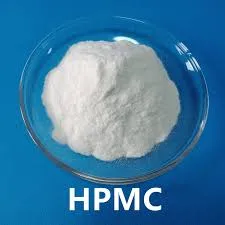
joulu . 11, 2024 12:12 Back to list
hydroxypropyl methyl cellulose manufacturers
Hydroxypropyl Methyl Cellulose Manufacturers An Overview
Hydroxypropyl Methyl Cellulose (HPMC) is a versatile cellulose ether that finds extensive applications across various industries, including pharmaceuticals, construction, food, and cosmetics. The increasing demand for HPMC has paved the way for numerous manufacturers to enter the market, each striving to produce high-quality products that meet diverse customer needs. This article explores the significance of HPMC, highlights key manufacturers, and discusses industry trends.
HPMC is synthesized from natural cellulose, a polymer derived from plant cell walls. By modifying cellulose through hydroxypropyl and methyl etherification, manufacturers create a compound that is water-soluble, biodegradable, and non-toxic. This unique combination of properties makes HPMC an ideal ingredient in various formulations. For instance, in the pharmaceutical sector, it is widely used as a binder and a controlled-release agent in tablets and capsules. In construction, it serves as a thickening agent and improves the workability of cement-based products.
The global HPMC market has witnessed substantial growth in recent years, driven by a surge in demand for construction materials, the expanding pharmaceutical sector, and the increasing use of natural and plant-derived ingredients in personal care products. Key manufacturers around the world are investing in research and development to enhance the properties of HPMC and expand its applications.
One of the prominent manufacturers of HPMC is Ashland Global Holdings Inc., a leading specialty chemicals company. Ashland provides a wide range of HPMC products tailored for various applications, including construction, food, cosmetics, and pharmaceuticals. The company emphasizes sustainability and innovation, continuously working on enhancing the performance of its cellulose derivatives.
Another significant player in the HPMC manufacturing industry is Dow Chemical Company. Dow offers a diverse portfolio of hydroxypropyl methyl cellulose products that cater to multiple sectors. Dow’s commitment to sustainable practices and product quality has made it a reliable name in the market. The company's extensive research efforts ensure that it stays ahead of consumer trends and regulatory demands.
hydroxypropyl methyl cellulose manufacturers

Additionally, Shin-Etsu Chemical Co., Ltd., a major Japanese chemical manufacturer, focuses on producing high-quality HPMC products. The company is recognized for its advanced technology and superior manufacturing processes, which contribute to the exceptional purity and performance of its HPMC. This commitment to quality has positioned Shin-Etsu as a preferred supplier for many industries.
As the demand for HPMC continues to rise, several emerging manufacturers are entering the market, especially in regions like Asia-Pacific. Companies like SE Tylose GmbH & Co. KG and Cellulose Solutions are gaining traction by offering innovative HPMC solutions tailored to local markets. These manufacturers are leveraging advanced production techniques and strategic partnerships to enhance their product offerings and expand their customer base.
The HPMC market is also influenced by several trends, including the move towards eco-friendly and sustainable products. With the growing awareness of environmental issues, manufacturers are increasingly focusing on developing HPMC using sustainable practices and sourcing raw materials responsibly. This shift towards sustainability is not just a trend but a necessary response to the evolving demands of consumers and regulatory bodies.
Furthermore, the COVID-19 pandemic has accelerated the demand for health and hygiene products, leading to a heightened interest in HPMC's applications in hand sanitizers and other disinfectants. Manufacturers are adapting to this shift by optimizing their production processes and expanding their product lines to meet the changing market needs.
In conclusion, Hydroxypropyl Methyl Cellulose manufacturers play a crucial role in supplying this essential ingredient across multiple industries. The ongoing advancements in technology, coupled with the rising demand for sustainable products, are shaping the future of HPMC production. As more manufacturers invest in innovative solutions and sustainable practices, the HPMC market is poised for continued growth and diversification. Whether it is enhancing the performance of construction materials or improving drug formulations, HPMC remains an indispensable component in various applications, underscoring its importance in today’s industrial landscape.
-
Versatile Hpmc Uses in Different Industries
NewsJun.19,2025
-
Redispersible Powder's Role in Enhancing Durability of Construction Products
NewsJun.19,2025
-
Hydroxyethyl Cellulose Applications Driving Green Industrial Processes
NewsJun.19,2025
-
Exploring Different Redispersible Polymer Powder
NewsJun.19,2025
-
Choosing the Right Mortar Bonding Agent
NewsJun.19,2025
-
Applications and Significance of China Hpmc in Modern Industries
NewsJun.19,2025







